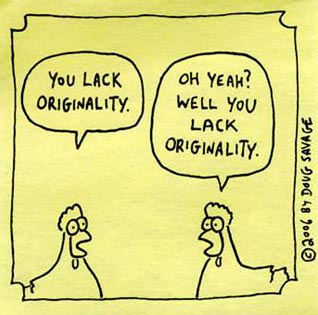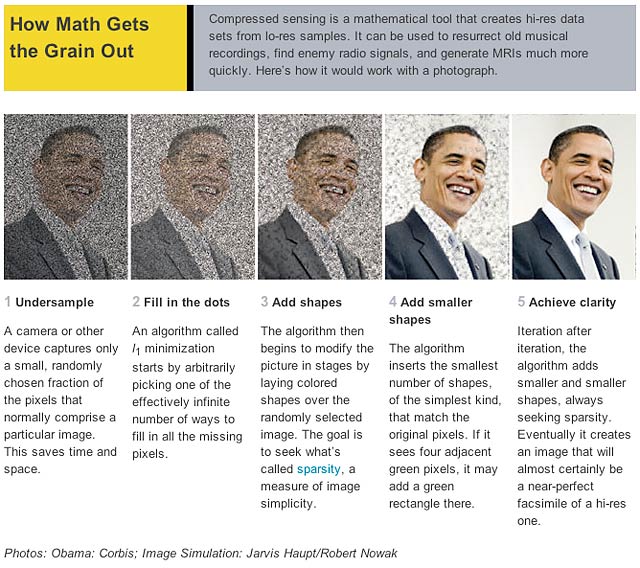science
‘Whatever games are played with us, we must play no games with ourselves.’ –R. W. Emerson

Psychologists have used an inventive combination of techniques to show that the left half of the brain has more self-esteem than the right half. The finding is consistent with earlier research showing that the left hemisphere is associated more with positive, approach-related emotions, whereas the right hemisphere is associated more with negative emotions.
Iain McGilchrist has recently published ‘The Master and his Emissary’ a book which posits that the division of the brain into two hemispheres is essential to human existence, making possible incompatible versions of the world, with quite different priorities and values.
illustration { Kristian Hammerstad }
‘If you are going through Hell, keep going.’ –Winston Churchill
The Feb. 27 magnitude 8.8 earthquake in Chile may have shortened the length of each Earth day.
JPL research scientist Richard Gross computed how Earth’s rotation should have changed as a result of the Feb. 27 quake. Using a complex model, he and fellow scientists came up with a preliminary calculation that the quake should have shortened the length of an Earth day by about 1.26 microseconds (a microsecond is one millionth of a second).
Perhaps more impressive is how much the quake shifted Earth’s axis. Gross calculates the quake should have moved Earth’s figure axis (the axis about which Earth’s mass is balanced) by 2.7 milliarcseconds (about 8 centimeters, or 3 inches). Earth’s figure axis is not the same as its north-south axis; they are offset by about 10 meters (about 33 feet).
By comparison, Gross said the same model estimated the 2004 magnitude 9.1 Sumatran earthquake should have shortened the length of day by 6.8 microseconds and shifted Earth’s axis by 2.32 milliarcseconds (about 7 centimeters, or 2.76 inches).
I’m on the phone with Aloysia, trying to do 2 things at once and she is making me laugh

One of the most interesting things we learned in Artificial Intelligence is that what we consider hard, like chess and multiplication, is easy for a computer. What we consider easy–like recognizing emotions on faces, or visually distinguishing between a dog and a cat–a computer finds quite difficult. What is hard for us, is only because we know the right answer, and know how difficult it is to do the logic in our head. Most thoughts we take for granted are really quite complex, yet because we can’t even begin to write down how we do it, we do not realize it.
photo { Robert Whitman, 80s my livingroom }
But you know she’ll never ask you please again

A new mathematical model of hurricane formation finally solves one of the outstanding puzzles of climate change but also predicts dramatic increases in the number of storms as the world warms.
photo { Christophe Kutner }
Safety. Obscurity. Just another freak, in the freak kingdom.

A machine that prints organs is coming to market.
The great hope of transplant surgeons is that they will, one day, be able to order replacement body parts on demand. At the moment, a patient may wait months, sometimes years, for an organ from a suitable donor. During that time his condition may worsen. He may even die. The ability to make organs as they are needed would not only relieve suffering but also save lives. And that possibility may be closer with the arrival of the first commercial 3D bio-printer for manufacturing human tissue and organs.
The new machine, which costs around $200,000, has been developed by Organovo, a company in San Diego that specialises in regenerative medicine, and Invetech, an engineering and automation firm in Melbourne, Australia.
photo { Robert Whitman, 80s my livingroom }
‘Children are all foreigners.’ –R. W. Emerson

It’s with some courage that Melanie Glenwright and Penny Pexman have chosen to investigate the tricky issue of when exactly children learn the distinction between sarcasm and irony. Their finding is that nine- to ten-year-olds can tell the difference, although they can’t yet explicitly explain it. Four- to five-year-olds, by contrast, understand that sarcasm and irony are non-literal forms of language, but they can’t tell the difference between the two.
photo { Mando Alvarez }
Seven days in sunny June

It is amazing that out of the countless trillions of ways molecules can be arranged, only a few million ways result in things that can reproduce themselves.
The biologist E.O. Wilson estimates there are about 13 million species, broken down as follows:
Insects 9 million
Bacteria 1 million
Fungi 1 million
Viruses 0.3 million
Algae 0.3 million
Worms 0.3 million
Plants 0.2 million
Protozoa 0.2 million
Echinoderms 0.2 million
Mollusks 0.2 million
Crustaceans 0.2 million
Fish 30 thousand
Reptiles 10 thousand
Birds 10 thousand
Amphibians 5 thousand
Mammals 5 thousandIt has been estimated that since the Pre-Cambrian Explosion 540 million years ago, during which the predecessors of most of these species arose, upwards of 90% of all species are extinguished each 100 million years due to environmental catastrophes. Hence, even counting the ways life might have been organized in the distant past, not more than a few hundreds of millions of molecular patterns have worked.
In comparison, a practically infinite number of molecular patterns are possible given the dozens of atomic building blocks nature has to work with and the astronomical number of possibilities for stringing these atoms together in three-dimensional space. (…)
Life owes its improbable existence to an exceedingly rare kind of code. This life-code does two things unique to life.
First, it enables self-replicating order to be structured out of disorder. Second, it enables that order to be maintained (for a while) against all the forces that make things fall apart. Wow yourself with this: life-codes are merely a mathematical sequence, like a formula, that shazam-like transforms randomness into purpose and entropy into organization.
{ Martine Rothblatt, Will Uploaded Minds in Machines be Alive? | Institute for Emerging Ethics and Technology | Continue reading }
photo { Garry Winogrand }
Focus. Speed. I am speed.

{ Obsessive driving fanatics are prone to drive aggressively | Full story }
screenshot { from Embryo, 1976 | more | IMDb }
He won’t know what to make of your blinker signal that says you are about to turn right

Evolution, the theory goes, guarantees survival to the fittest. But we can blame evolution for some of today’s most pressing health problems, such as cancer, obesity, diabetes and cardiovascular disease.
A 2009 Gallup poll found that 44% of Americans believe that God created human beings in their present form within the past 10,000 years. Many of them also think the human body is perfectly designed.
But most scientists—including biologists, anthropologists, paleontologists and geneticists—see the 21st century human body as a collection of compromises, jury-rigged by evolution as our ancestors adapted to changing conditions.
“In many ways, we are maladapted for modernity,” says Stephen Stearns, a Yale evolutionary biologist.
porcelain sculpture { Kate Macdowell | more }
To what he replied, It’s late I should miaow
Graduates prefer cats. According to press reports of research at the University of Bristol, households with graduates are 36 per cent more likely to have cats than their academically uninstructed counterparts. Most reports attribute the difference to discrepant brain power. “Clever people are more likely to own cats than dogs,” says the Press Association version of the findings.
The newspapers have diffused the same message. Jane Murray, who led the research, is credited with a rival explanation: “It could be related to longer working hours,” which leave graduates with less time to care for pets than the implicitly idle dog-lovers. (…)
I like cats. (…) The real difference between cat-lovers and dog-lovers has nothing to do with income, education or habits of work. It is, I suspect, a matter of morals. Dog-lovers are good. Cat-lovers are morally indifferent or actively evil.
Everybody go, hotel, motel, holiday inn!
An old Greek fable famously tells the story of a fox, who tries really hard to get his hands on a tasty vine of grapes. The fox tries and he tries, but eventually fails in all of his attempts to acquire the grapes; at which point the fox calmly continues with his life by convincing himself that he really didn’t want those grapes that badly after all…
Although there is a common wisdom in this tale of how we deal with being thwarted in our desires, a more modern psychological account of the fox’s tale may look a little different: i.e. if the fox in our tale had been reading today’s psychological journals he may have concluded, more precisely, that had he continued in his efforts, and finally obtained the grapes, THEN he may not have liked them as much.
To see why the fox may have concluded this, we must first consider that from a physiological (and pharmacological) perspective, wanting something and liking something do not necessarily go hand-in-hand, and that they certainly aren’t the same thing. For example, a drug addict really, really wants her fix, but many addicts genuinely report not particularly liking their subsequent drugged out experiences. Additionally, a number of psychological studies show that liking and wanting can be independently manipulated, and that often times both operate at a subconscious level.
Off the side of the sky

It starts with a barely perceptible blurring of vision from time to time - the sort of thing you might chalk up to getting older. But when you get it checked out, there is disturbing news: you have a disease called age-related macular degeneration, or AMD. (…)
People typically develop AMD after the age of 50, and it affects nearly 1 in 10 of those over the age of 80. It is the most common cause of blindness in the west.
It can progress slowly or quickly, but there is no cure. (…)
Now, however, a possible treatment for dry AMD is on the horizon.
The notes of the bird continuous echoing
Corvids – crows, ravens, jays, and magpies – are well known to be among the most intelligent of birds. Along with parrots, corvids have been a frequent subject of avian intelligence studies. Experiments have documented problem-solving and tool use, both in the lab and in the wild. Many of the recent experiments have tested intelligence in New Caledonian Crows (Corvus moneduloides), but tests of Ravens (Corvus corax) and Rooks (Corvus frugilegus) have also found problem-solving capabilities. New Caledonian Crows are a common subect for research because they are known to use a variety of tools in the wild.
I do the same, and it is infinitely easier

Conformity is such a strong influence in society that it’s impossible to understand human behaviour without it. Psychological experiments show that people will deny the evidence of their own eyes in order to conform with other people.
Understanding when we conform has all kinds of practical real-world benefits, depending on your aims: it can help you understand your own behaviour as well as understand how others will behave under a variety of different situational pressures. Everyone should be aware of these factors and how they affect the most important areas of their social life.
Here are the ten timeless influencers of conformity:
cartoon { Doug Savage }
‘Every moment is the last because it is unique.’ –Marguerite Yourcenar

Erotomania is a type of delusion in which the affected person believes that another person, usually a stranger, is in love with him or her.
The illness often occurs during psychosis, especially in patients with schizophrenia or bipolar mania.
Erotomania is also called de Clérambault’s syndrome, after the French psychiatrist Gaëtan Gatian de Clérambault (1872–1934).
The term erotomania is often confused with obsessive love, obsession with unrequited love, or hypersexuality (hypersexuality replaces the older concepts of nymphomania (furor uterinus) and satyriasis.).

The Reagan assassination attempt occurred in Washington, D.C. on Monday, March 30, 1981.


President Reagan and three others were shot and wounded by John Hinckley, Jr. with a .22-caliber pistol.



Reagan was the first serving United States president to survive being shot in an assassination attempt.

{ Reagan assassination attempt | Wikipedia | Continue reading | Google Images | Related: In a 1982 speech, President Ronald Reagan declared illicit drugs a threat to America’s national security, putting a too-literal gloss on the phrase “war on drugs.” }

The motivation behind Hinckley’s attack stemmed from an obsession with actress Jodie Foster due to erotomania. While living in Hollywood in the late 1970s, he saw the film Taxi Driver at least 15 times, apparently identifying strongly with Travis Bickle, the lead character.
Hinckley arrived in Washington, D.C. on Sunday, March 29, getting off a Greyhound Lines bus and checking into the Park Central Hotel. He had breakfast at McDonald’s the next morning, noticed U.S. President Ronald Reagan’s schedule on page A4 of the Washington Star, and decided it was time to make his move.
Knowing that he might not live to tell about shooting Reagan, Hinckley wrote (but did not mail) a letter to Foster about two hours prior to the assassination attempt, saying that he hoped to impress her with the magnitude of his action.
{ Wikipedia | Continue reading | The Trial of John Hinckley, 1982 | Hinckley bought two identical .22-caliber revolvers in Rocky’s Pawn Shop in Dallas on Oct. 3, 1980 | Photos: John Hinckley, Jr. | Jodie Foster in Taxi Driver. }
It’s all the streets you crossed, not so long ago
The promise—and the hype—of changing your DNA through behavior.
Studies showing how experience alters genes have been few and far between—which is why a new one on smoking and diet caught my eye.
The study of these kinds of changes in genes is called epigenetics. Crucially, the changes do not involve alterations of gene sequences, those famous A’s, T’s, C’s, and G’s that the Human Genome Project figured out. (…)
Scientists are now making specific, actionable discoveries in epigenetics. This week, for instance, researchers are reporting that eating leafy green vegetables, folate (found in these veggies as well as in some fruits and in dried beans and peas), and multivitamins can affect the epigenetics of genes involved in lung cancer in a way that could reduce the risk of getting the disease, especially from smoking.
O, sublime Trumpet full of strange piercing sounds
The aim of the present paper was to evaluate the current state of knowledge on the perception of facial attractiveness and to assess the opportunity for research on poorly explored issues regarding facial preferences. (…) In spite of thousands of studies conducted, facial attractiveness research may be regarded as rather poorly progressed, although prospects for it are good. (…)
1. The meaning of attractiveness. A researcher may tell a judge how to interpret the notion of “attractiveness,” or the judge may him- or herself explicitly or implicitly define the meaning of the attractiveness. Qualities of attractiveness are able to be distinguished in terms of a spouse, a lover, a friend, or a co-worker, etc. People may judge FacA in individuals of their own sex in order to estimate their competitiveness on the mate market, or they may make a judgement about their own facial attractiveness (FacA) to estimate their own competitiveness, or they may assess FacA of their children so as to decide about how much should be invested in them, etc.
2. The characteristics of the judge. Many factors influence an individual’s pattern of facial preferences (FacP): genes, cultural norms and fads, lifetime experience, biological, ecological, physiological and psychological state of the judge, his knowledge or idea about the owner of the face examined, and the perceived similarity of the examined face to his own face [Kościński 2008].
3. The face’s category. The perception of the judge as to affiliation of the face to a category (e.g., sexual, age, racial) may influence their assessment of the face and, thereby, the judgement of FacA. For example, a face of androgynous appearance may be taken for male or female one, which can influence its perception [Webster et al. 2004].
Thus, the assessment of FacA is the method by which a person maps a facial image onto various evaluative judgements about the “imagined” owner of a face. The scope of research on FacA should comprise all biologically and socially significant forms of facial assessments (i.e., various senses of attractiveness and various facial categories) made by judges having diverse traits.
{ Krzysztof Koscinski, Current status and future directions of research on facial attractiveness, Anthropological Review, Vol. 72, 45–65 (2009) | PDF | Continue reading }
Kiss the boot of shiny, shiny leather, shiny leather in the dark

What is nostalgia good for? A Standard Life study suggests 28 to 40-year-olds don’t plan for the future because they prefer to reminisce about past times. (…)
In recent years, psychologists have been trying to analyse the powerful and enduring appeal of our own past - what Mr Routledge calls the “psychological underpinnings of nostalgia”.
“Why does it matter? Why would a 40-year-old man care about a car he drove when he was 18?” he asks. It matters, quite simply, because nostalgia makes us feel good.
Once nostalgia was considered a sickness - the word derives from the Greek “nostos” (return) and “algos” (pain), suggesting suffering due to a desire to return to a place of origin. (…)
“Nostalgia is a way for us to tap into the past experiences that we have that are quite meaningful - to remind us that our lives are worthwhile, that we are people of value, that we have good relationships, that we are happy and that life has some sense of purpose or meaning.” (…)
Nostalgia is usually involuntary and triggered by negative feelings - most commonly loneliness - against which it acts as a sort of natural anti-depressant by countering those feelings.
Wrapped the hills in a blanket of Patterson’s curse

You might have seen news reports about a recent study showing that religious people are no healthier than non-religious. (…)
Working out the relationship between religion and health is actually quite complicated. If you take the straightforward approach the answer is clear: religious people are unhealthier and die younger than the non-religious.
The reason for that is obvious. Religious people tend to be poorer and less well educated. As a result, most studies try to work out whether religious people are healthier after adjusting for these differences.
So the key question boils down to this: which differences should you adjust for? Your decision on this will affect the answer you get. (…)
Most studies adjust for basic demographic factors. Older people and women are more likely to be religious, and both these affect your chances of heart attacks. Most studies also adjust for education and income level. (…)
But there are also a host of lifestyle factors that make heart disease more likely (smoking, lack of exercise, overeating). Here’s where it starts to get more difficult, because religion could definitely cause you to be a nonsmoker.
Many studies adjust for these lifestyle factors. But you can go a step further - and that’s what they did in this study. (…)They found that religious people smoked less. This was one of only two lifestyle factors that remained after they adjusted for all the demographic differences between the religious and non-religious (age, gender, race, education and income). That’s something that’s commonly observed, and it may be because religion provides social pressure and support to help people quit.
But the study also found that religious people were fatter (again, after adjusting for demographic factors). The effect was large - religious people were 50-60% more likely to be obese.
photo { Katerina Jebb }









